The Ministry of Defence (MOD) has issued a Request for Information (RFI) for the Strategic Sealift – Future (SSL-F) programme, outlining its vision for a modernised and expanded strategic sealift capability.
The initiative will replace the existing Strategic Sealift – Interim (SSL-I) capability with a versatile fleet designed to meet the UK’s future defence needs and enhance resilience in global operations.
The UK’s current strategic sealift capability is provided by Foreland Shipping Limited, which operates four Point-class Roll-On/Roll-Off (Ro-Ro) vessels chartered by the MOD. Initially, six Point-class vessels were built in 2002 to meet defence requirements. However, two vessels were released from the arrangement in 2011, leaving the MOD with four vessels under contract.
The RFI confirms that the MOD intends to restore the fleet to six vessels for the SSL-F programme, increasing capacity to meet both routine and contingency requirements. “The Authority intends to expand its current capability’s capacity in order to provide support to contingent operations and ensure a resilience is built into the capability,” the document states.
Objectives of the SSL-F Programme
The RFI outlines several key objectives to guide the programme:
- “To determine the extent to which our high-level requirements are feasible and to identify potential technical or commercial challenges.”
- “To further understand innovative and novel solutions which may inform the solution space.”
- “To determine the appetite and capacity of the market to inform any procurement strategy and delivery approach.”
- “To determine the potential benefits and drawbacks of different solutions in meeting the project requirements.”
Key Requirements for the Future Fleet
The SSL-F programme specifies a range of requirements for the new fleet to meet operational demands well into the 2030s and beyond. Among the most notable features are:
- Capacity and Cargo Handling
The fleet must collectively provide at least 15,600 lane metres, with each vessel capable of carrying a range of cargo, including heavy military equipment, ISO containers, dangerous goods, and cold chain storage.
“The SSL-F capability shall embark, lift, and disembark heavy defence inventory within a mixed cargo comprising all IMDG codes,” the RFI explains. This includes supporting key military assets such as Challenger tanks, Ajax and Boxer armoured vehicles, and artillery systems. - To enhance operational flexibility, the vessels will feature self-supporting ramps for loading and offloading, organic cranes capable of lifting 40-foot ISO containers, and internal ballast systems for Mexeflote operations. “Ramps are the safest and most expedient means to load/offload armoured vehicles and heavy equipment,” the RFI notes.
- Global Deployability
The vessels must operate in diverse environments, ranging from Arctic to tropical conditions, and navigate restricted waterways such as the Panama and Suez Canals. “The capability must be able to operate globally and utilise the most expedient transit routes,” according to the RFI. - Enhanced Survivability and Versatility
The MOD places a strong emphasis on survivability, requiring vessels to meet Ice Class 1A standards and accommodate protection systems. “Enhanced survivability is required to mitigate against physical loss of a vessel,” the document states. The vessels must also be capable of future-proofing, with adaptability to evolving fuel technologies. - Living and Operational Facilities
Designed for extended deployments, the vessels will include living spaces, recreational facilities, and amenities for up to 12 additional personnel. “Vessels should be equipped with living spaces, gym, toilets, showers, rest, laundry, food preparation, welfare facilities, recreational and exercise areas,” the RFI specifies. - Reliability and Availability
The SSL-F fleet must be operational for 355 days per year, with a mission readiness period not exceeding 72 hours. This ensures rapid deployment capability across multiple global tasks. “The capability as a whole shall deliver no less than four concurrent global tasks throughout the year,” the RFI adds.
Indicative Timeline and Market Engagement
The MOD has provided an initial timeline for the programme, which includes:
- RFI Response Deadline: 28 February 2025
- One-to-One Engagements: March 2025
- Strategic Outline Case Completion: November 2025
The MOD acknowledges the timeline is subject to change, stating:
“This timeline is provided on a without commitment basis for indicative purposes only. The Authority will not be held to these dates and reserves the right to adapt them as is required or it deems fit.”
Supporting NATO and Global Operations
The SSL-F programme highlights the strategic importance of sealift capability in supporting the UK’s commitments to NATO and its global defence presence. The RFI underscores that the future fleet will play a critical role in transporting heavy equipment, ammunition, and sensitive freight for contingent and routine operations.
“The capability includes the movement of heavy armour and their transports, major equipment, ammunition and complex weapons, and sensitive freight, supporting the UK global presence and is critical to the UK’s contribution to NATO operations, including Article 5 commitments,” the MOD explains.
With the current Point-class vessels expected to remain in service into the early 2030s, the SSL-F programme provides a timely opportunity to establish a robust and adaptable capability for decades to come. “The current Strategic SeaLift capability will endure into the early 2030s, thus providing an opportunity to establish a long-term future sealift capability thereafter,” the MOD states.


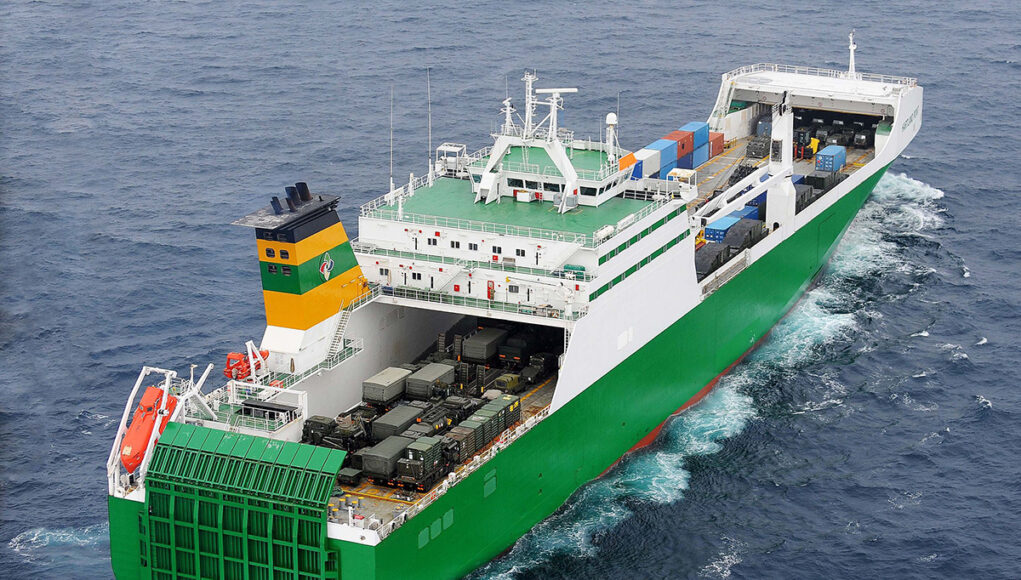
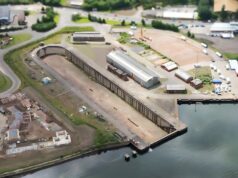
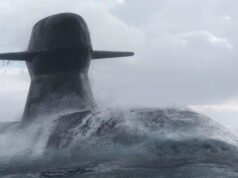
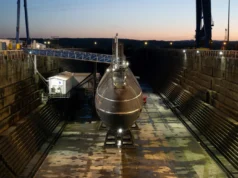
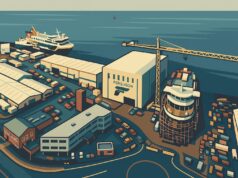
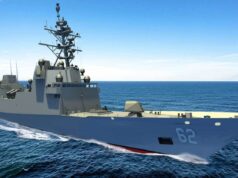
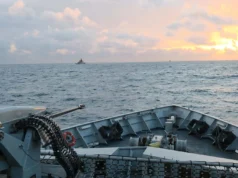

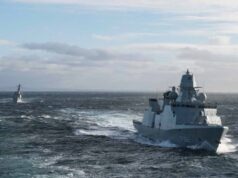
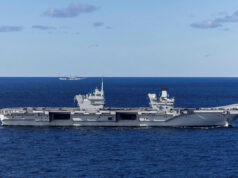
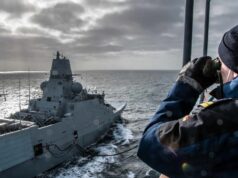

I won’t hold my breath until it is fully funded to build all of these.
Can these just be built is South Korea on grounds of cost…if they are built in UK they will be eye watering my expensive and used to displace my needed complex warship building with tonnage…
I cannot see how they could be built in the UK, the RN and RFA is way to far behind on recapitalisation of hulls and even with the new sheds essentially the shipbuilding capacity we have is pre booked for a generation.
Agree these just need to knocked up by a friendly nation… maybe with an industrial exchange package… I’m sure we have lots of missiles that would interest Korea.
What about Ferguson 😀
Fergusons is busy building Type 26 blocks for BAE also that yard is far too small to build Point class replacements.
If FSS was a bit further along H&W is the idea choice, in fact two of the Point class were built Nat H&W.
I assume that these will operate on similar terms to the current Point contract. Neither RN nor RFA will buy or operate them. Instead they will be owned by a shipping company which will be required to ensure the necessary availability. Depending on the timing of FSS, Harland and Wolf, which built 2 of the Points, could be involved.
Per an FOI answer in 2014, in 2013/4, 3 of the Points were used once, 1 used three times for operations each @ 2 months in duration.
Confirms that the new arrangement will probably be similar though back up to the original 6 vessels.
The four ships permanently in use by the MOD were heavily involved in Telic and Herrick resupply from their build until those operations finished.
One of them leaves the UK every 6 weeks or so to resupply Ascension and the Falklands, plus all the other day to day MOD work so there’s plenty for them to do.
The other two ships were on commercial charter (and actually made money!) but on a callback clause, this mean they were a strategic asset that was effectively cost neutral as the charter fees covered the operating costs.
Of course MOD/Treasury didn’t see it like that and binned them right in time for the Afghanistan withdrawal in 2014, at which point they had to go and charter ships commercially at great expense to bring the kit home.
I sailed in all 6 of those ships over an 8 year period.
I agree, let’s wait and see what is ordered, what is commissioned and what is still in service a couple, or so, SDRS after that!
However logical building in a ship-building mecca like S. Korea is. If the UK is serious about re-building the RN; then ship building in the UK is the only way to get economies of scale where units become cheaper with time (and orders); not to mention, the capability to build even these ‘non-complex ‘ (relatively) ships in a time of war, could be further developed to suit more complex military requirements (e.g. warships)… But yes, given the stagnant defence mind that resides in the UK, sure, build in S. Korea, they are very good at it.
Only if you wish the ships to last 10 years. You obviously have never served in a ship built in South Korea. The best RORO ferries I’ve served in are built Germany/sweden or Japan and last for 25yrs plus and spares are always available. Korean ships start needing major equipment updates or changes from about 5 yrs and are shot in 10. So yes cheap to built beut not really cost effective.
Personally I would like to see these go the the RFA and actually get the RFA back to the job it’s ment to do… deliver stuff.. give the MRSS/littoral strike vessels to the RN and build the RFA back to
3 fast sustainment vessels for supporting carrier opps
6 fleet tankers
6 logistic/strategic sea lift vessels
Stop then doing the amphibious warfare and mine warfare work, patrol etc which is not the job of auxiliaries.
Navy doesn’t have enough personnel, neither does RFA obviously, but RFA ships can be staffed with a lot less people
The ships will not be built for years, plenty of time to get the crews sorted.
You’re assuming it can be fixed, they’re not getting any increase in personnel from the sounds of the SDR. And that’s part of way 1 of the LPDs was laid up in 2010 anyway so hardly gonna run 6 amphibs
This isn’t the RFA’s job and never has been the RFA’s job. This is about general logistics not specialist logistics in high threat areas. At one time the Army operated its only fleets for logistic support in theatre. And the MoD has had contracts with lines like Foreland Shipping Ltd for bulk logistics, specialist logistics, and at one time before the jet age trooping for centuries.
I beg to differ, RFA Sea Centurion and Sea Crusader.
Weren’t these both short term interim charters before the Point class became available as per the new sea lift plan?
Yes.
As Peter S points out it was temporary measure not an additional tasking for the RFA who even then had more than enough work.
Typical of the ill informed post that is from atypical here.
Actually there was originally a plan to have this capability in the RFA fleet.
Sea Centurion specifically was supposed to be the first of a class of four sisterships operating within the RFA fleet providing sealift capability. A third ship was named Sea Chieftain, but the contract was cancelled before she was completed and joined the fleet.
The building shipyard (in Spain) went bust and the whole project then fell apart because the Madhouse foolishly decided they basically didn’t want those ships as they were going to concentrate on the upcoming Bay class, some senior officers openly said they felt it was beneath them (yes, really!).
Plus there was promises/delusion that RFA was actually about to expand at the time with all manner of new ships promised which even today still haven’t been delivered or even ordered, e.g. a dedicated hospital ship, Fort boat replacements etc.
The RFA foundation stone was the Fleet Coaling Service freìghting/hauling coal later oil and stores coastal and ocean-going so the Point class are not inappropriate for RFA.
Support for those pointless carriers.
Still years await from having fighter jets that can actually shoot a decent missile at another fighter jet
They have AMRAAM which is perfectly adequate
These ships work better under commercial management. A “VFM” exercise carried out by MOD some years ago concluded the Foreland project was the Government’s highest performing PFI and delivered far better value in both cost and operational terms in it’s current form than it ever would have done under RFA management.
The spreadsheets will have shown that it is cheaper to keep 6 sealift ships available on retainers, rather than 4 ships and then leasing additional commercial capacity, often at short notice at peak rates. The ships have also become a nice little earner for the MoD and Foreland Shipping as other European NATO countries (France, Germany, …) now regularly avail of them for a fee as a trusted, secure and high-quality transportation service for military equipment. Indeed, that is almost certainly why the requirement is again for six ships.
4 of the 6 Point’s were built in Germany. South Korea must be the hot favourite for any replacements ordered via a PFI type contract nearly 30 years later. There is very unlikely to be any requirement to build some or all of the ships in the UK as that will at least double their cost.
Given the recent defence agreements with Japan, don’t write them out of the picture.
Nothing so see here, stand back please. If this eventually happens there wont be anything over 2 tonnes to lift remaining. More pie in the sky blustering sadly.
Going up to 6 ships seems to be signalling a definite intention for greater or more sustained engagement internationally for a “mobile Britain” which is a good thing. At least it’s not a shrinkage!
Will there then be a need a few more T31s in the fleet to help protect these additional ships if the T23, T45, and T26s will be doing other things?
These heavy lift ships tend not to be escorted, they function more like commercial RoRo ships but carry only MoD cargo.
I saw a Point this year carrying kit back from Steadfast Defender to Southampton, they don’t even use the naval bases. If one of these started getting shot at there are many, many bigger issues to worry about.
My first thought was bang goes any heavy lift for the RN! LPDs and Bays can move/put MBT ashore but the new MRSS will be lightweight only and RM would need to secure port facilities so these can bring in the ARMY. If its actually done then could be good but i fear will start then get cut in half to save a bit
Still suffering from the defence cuts implemented by Cameron and Osbourne after they assumed office back in 2010. Both “Red” and “Blue” governments seem to have gone soft on defence and expect the military to suddenly expand overnight. Do they not realise that is not like opening another Lidl or Sldi, but that it takes time and money to recover from thier “fiddling, cost cutting and interference” in matters that most if not all politicians know little to nothing about.
Let’s get real, the MOD will release the current arrangement when the contract expires. The replacement won’t be six but rather 2 and this will be after delays and cost increases.
In the 1970s, the RFA returned an operating profit by moving oil for commercial customers. This offered a greater range of experience for RFA personnel. There is no reason why the logistic support ships could not be RFA manned – it might be beneficial for recruiting.
Of course, the chances of the ships actually appearing remain remote. After all, we have just learned that there is no intention to increase the size of the Army in the forthcoming Defence Review, and we can hardly deploy a division!
Interesting that 6 vessels are mentioned. 2 of the 6 Points were released in 2011, when the army was 50% bigger than now.